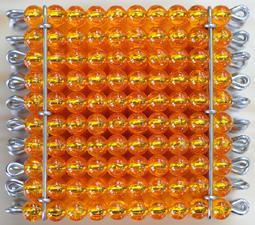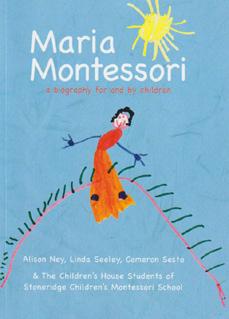
3 minute read
Those Mysterious Montessori Materials: The Golden Beads
If you are not a Montessori teacher, what you see when you visit your child's classroom will be very, shall we say, interesting.
In every issue of Tomorrow’s Child, we usually describe a few of the hundreds of Montessori lessons and learning materials, their purpose, and how they support the learning process.
This is only part of the Montessori materials and curriculum. Consider this like Montessori ‘Cliff Notes.’
Montessori children work with hands-on learning materials that make abstract concepts clear and concrete. This allows young students to develop a clear inner image of concepts in mathematics, such as, How big is one thousand? This approach makes sense to children.
For example, let's consider the decimal system, which forms the basis of mathematics: units, tens, hundreds, and thousands. Most small children need help understanding or operating with quantities larger than twenty. They can't normally conceive of the size of a hundred, thousand, or million, much less the idea that a thousand is equal to ten hundred squares or one hundred ten bars.
Montessori overcame this obstacle by developing a concrete model to represent the decimal system.
Single one-centimeter beads represent units; a unit of ten is made up of a bar of ten beads strung together; hundreds are squares made up of 10 ten-bars; and thousands are cubes made up of ten hundred squares. From this foundation, all the operations in mathematics become clear and concrete.
As the children construct their number, they decide how many units they want in their number, find the card showing that quantity, and place it in the upper righthand corner of their workspace.
Next, they go to the bank, or central collection of golden bead material in the room and gather that number of unit beads that corresponds with the number card selected. This process is repeated with the tens, hundreds, and thousands.
The second quantity is constructed in the same way, after which the two are combined in the process we call addition.
Beginning with the units, the children count the combined quantities to determine the result of adding the two together. If the result is nine or less, they find the large number card representing the answer. If their addition has resulted in a quantity of ten beads or more, the children stop at the count of ten and carry them to the bank to exchange them for a ten bar: ten units equal one unit of ten. This process is repeated with tens, hundreds, and thousands.
Many parents and teachers think that, while the Montessori math materials are appropriate for children during preschool and kindergarten, children shouldn't need these artificial toys or crutches when they go to the elementary grades. This needs to be clarified.
Elementary-age children rarely think abstractly, but schools often teach math as abstract concepts or steps to be practiced and learned, often without real understanding. Everything that is not connected to their own concrete experience is a mystery. Montessori's objective is to use concrete mathematical material to help children develop an inner picture of mathematics that will last a lifetime.










